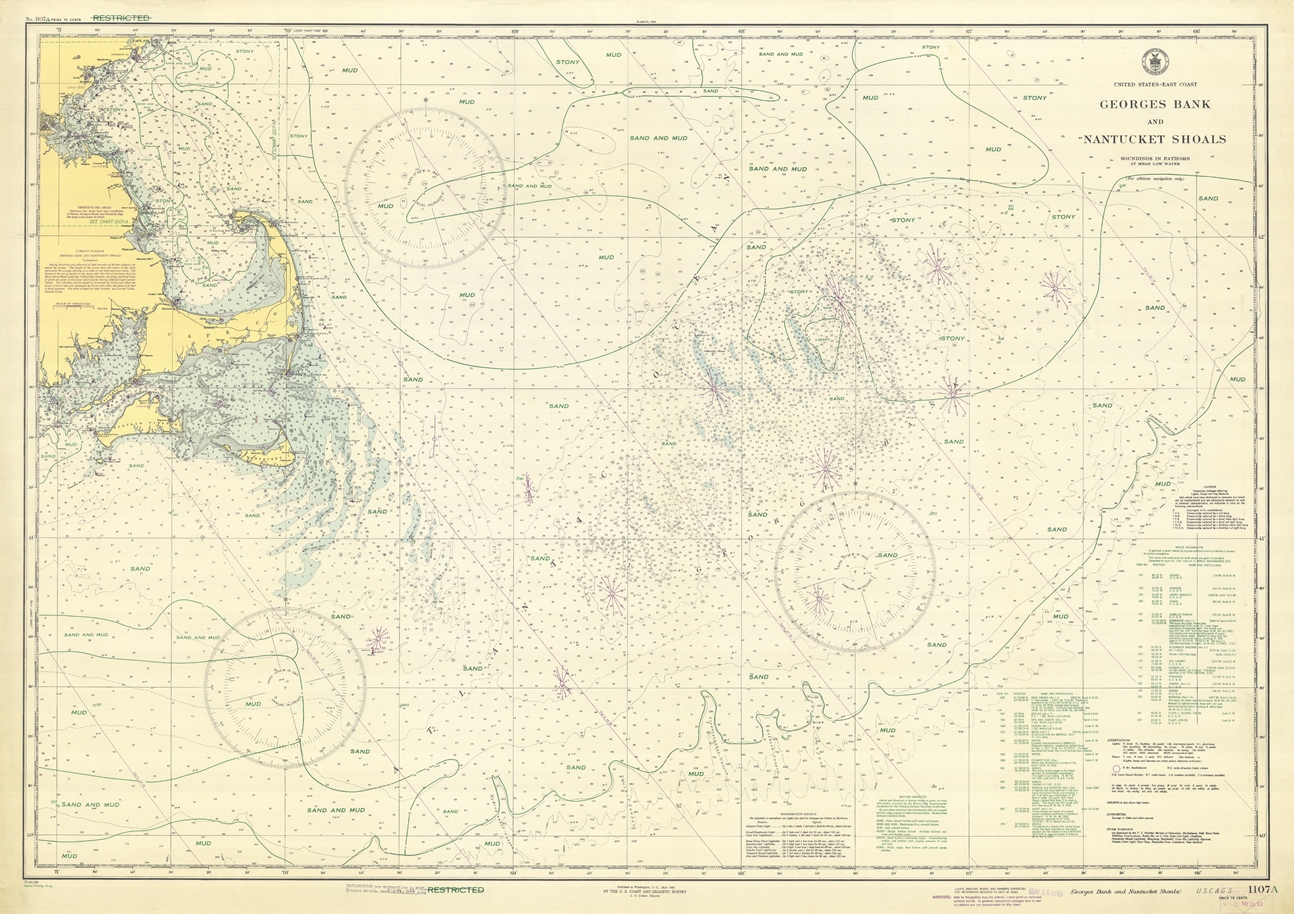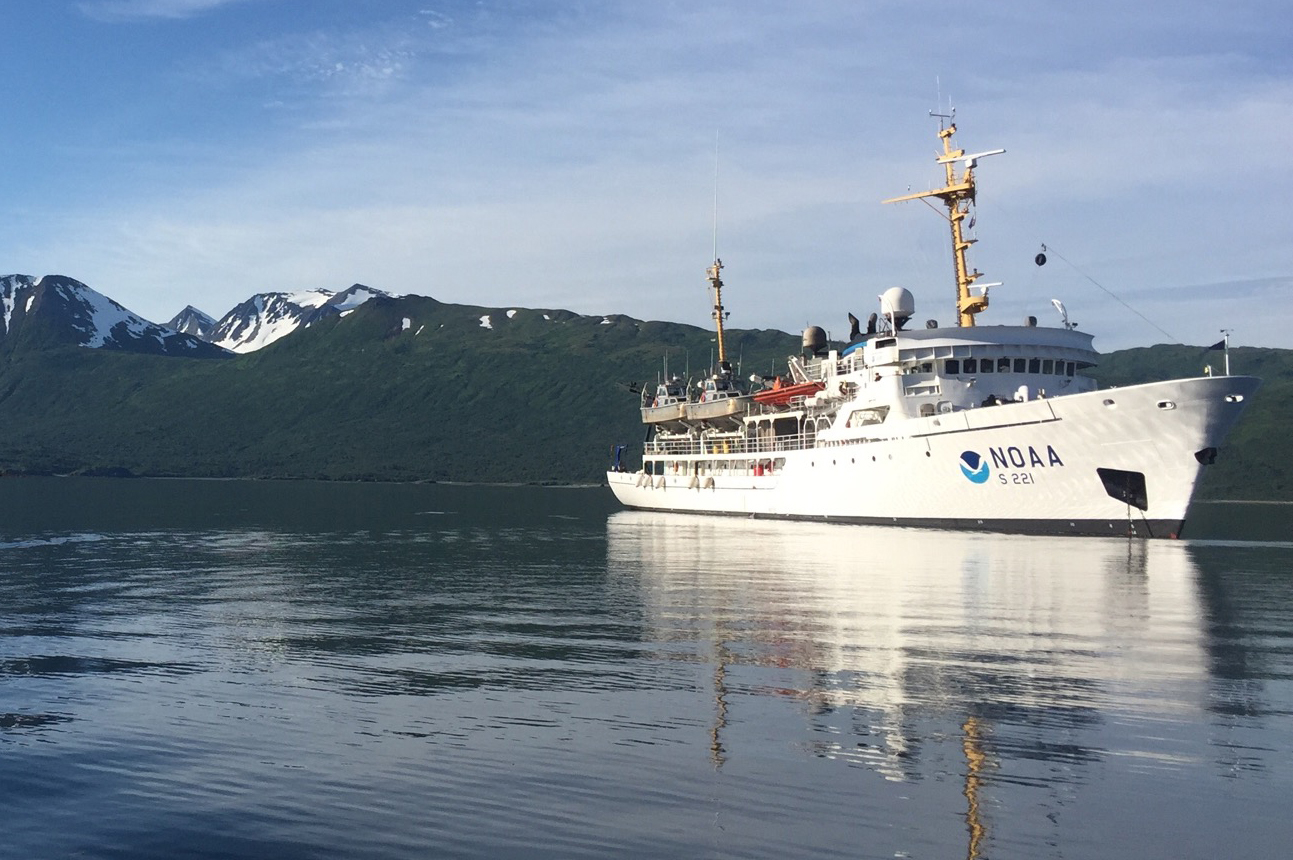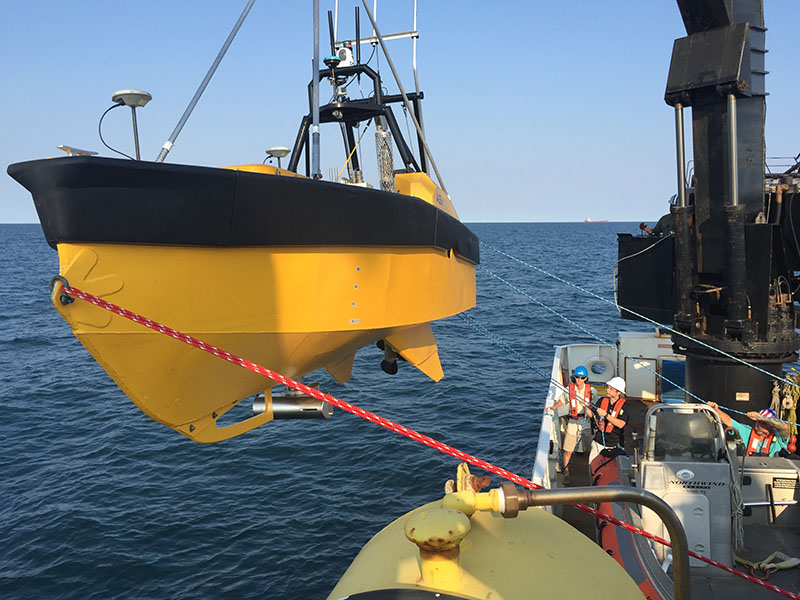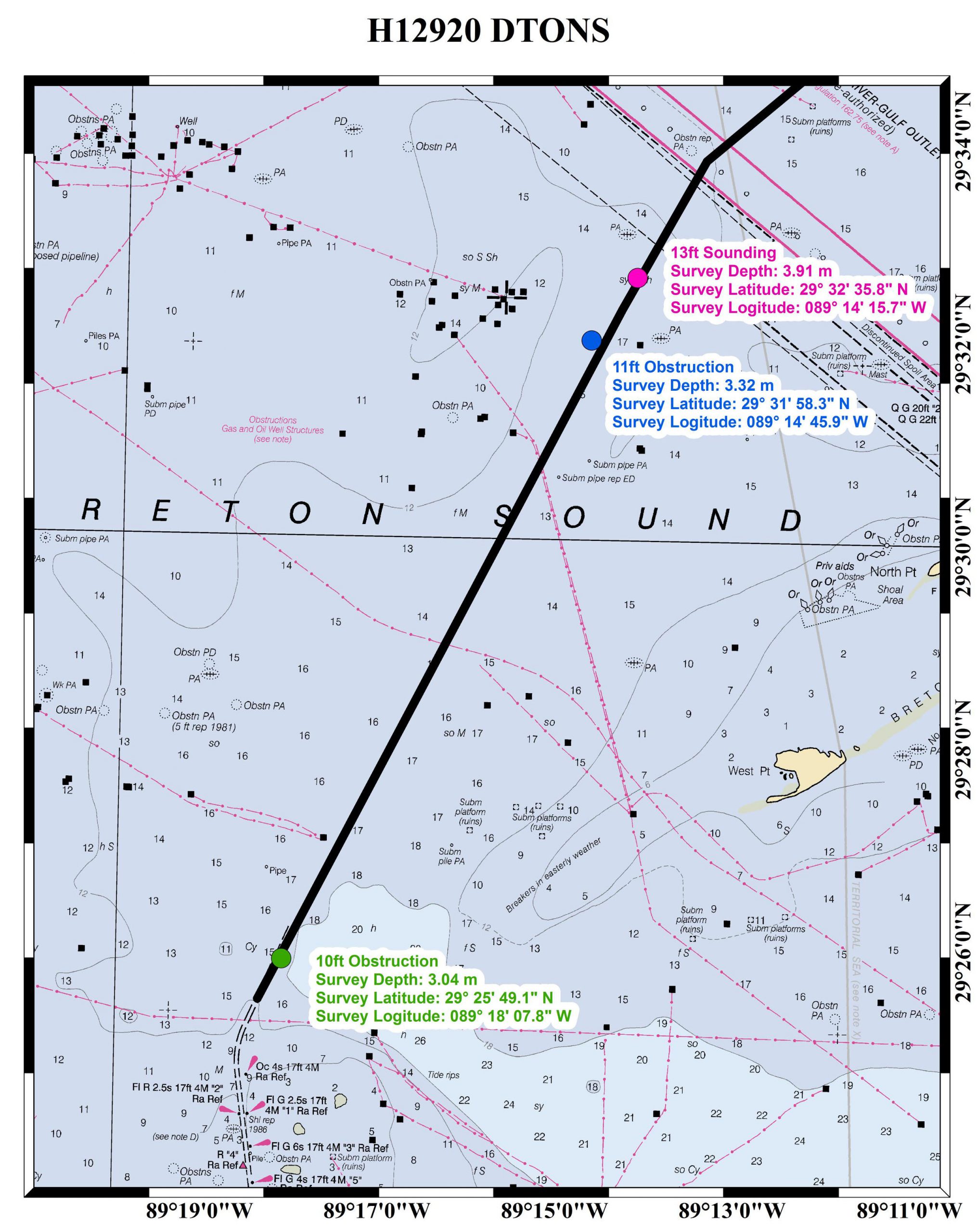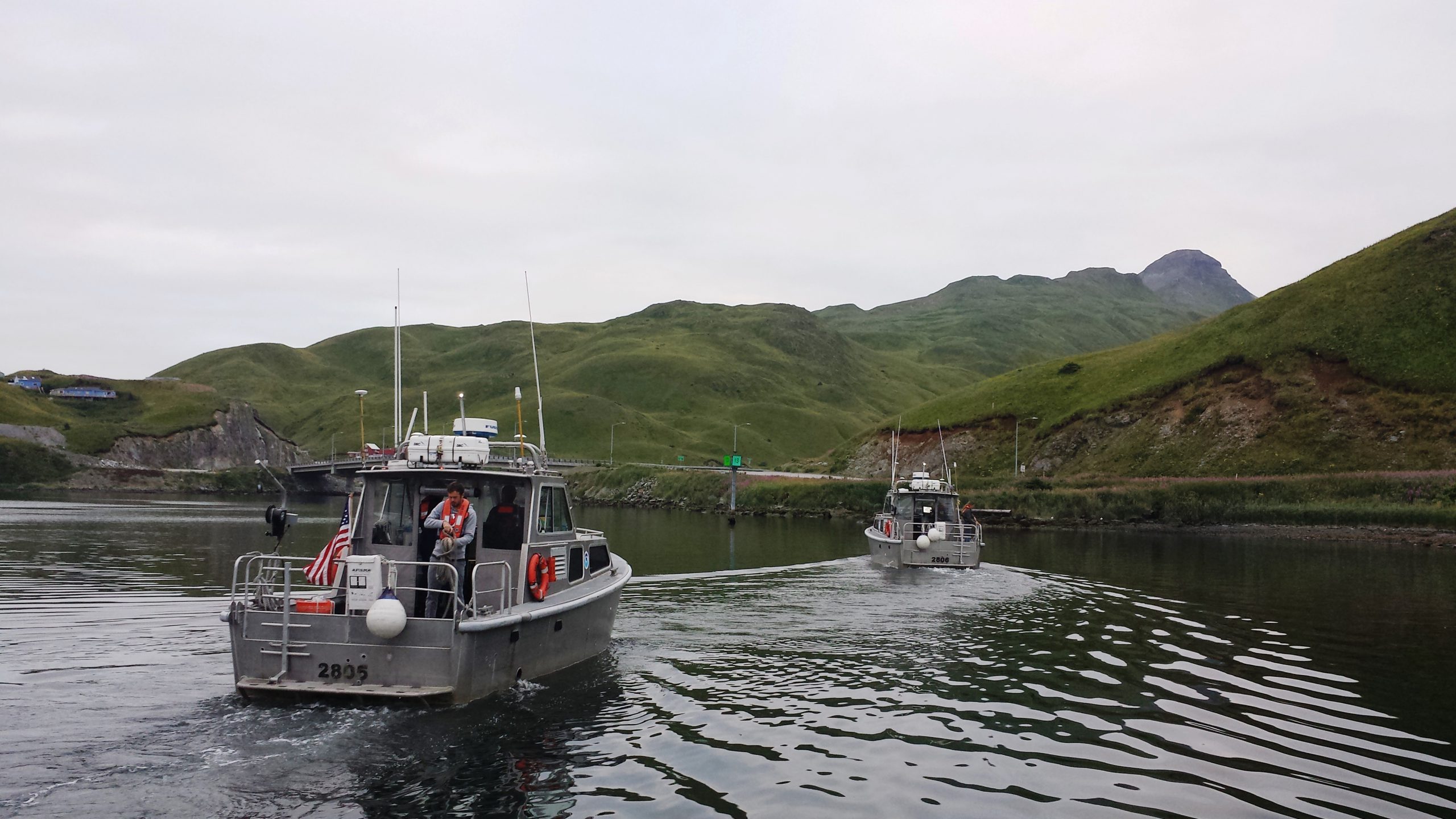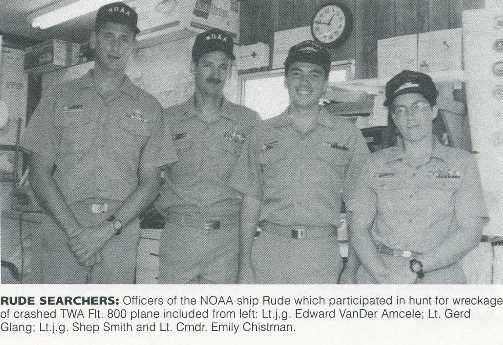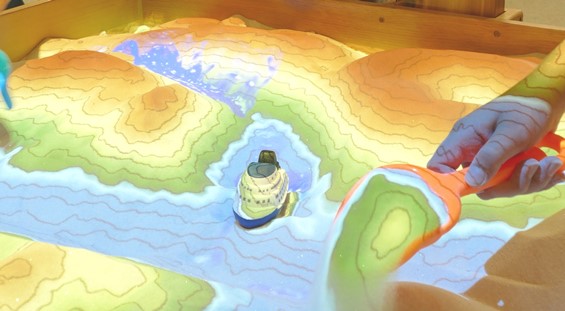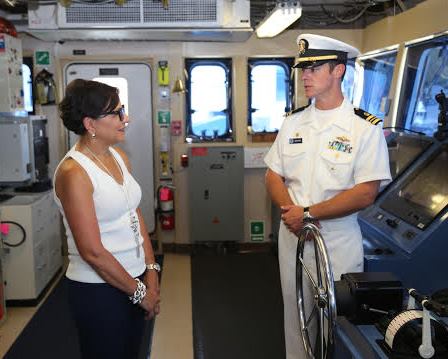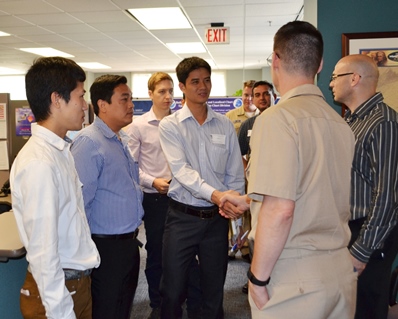On September 15, 2016, President Obama designated the first marine national monument in the Atlantic Ocean. The Northeast Canyons and Seamounts Marine National Monument includes two areas: one that includes four undersea mountains, called “seamounts” – Bear, Mytilus, Physalia, and Retriever; and an area that includes three undersea canyons – Oceanographer, Lydonia, and Gilbert – that cut deep into the continental shelf. These sea features have monumental histories.

Continue reading “A monumental history”
NOAA Ship Rainier surveys Uganik Bay
By Ensign Michelle Levano
NOAA Ship Rainier recently arrived in Uganik Bay, off of northwest Kodiak Island, to complete hydrographic survey operations in Uganik Passage and Uganik Bay, including the Northeast Arm, North Arm, and South Arm. Rainier has spent 2013 through 2016 surveying areas around North Kodiak Island, including Kizhuyak Bay, Whale and Afognak Passes, Kupreanof Strait, and Viekoda and Terror Bays. The ship will remain in Uganik Bay until the end of October.

Continue reading “NOAA Ship Rainier surveys Uganik Bay”
Hydro on the Great Lakes: preserving American history
By Ensign Max P. Andersen
Formed by retreating ice sheets over 14,000 years ago, the Great Lakes have long represented one of the most valuable fresh water resources in North America. They contain more than one-fifth of the world’s supply of fresh surface water, and the vast size is easily visible from space. From Native American hunting routes to French fur-trade exploration to influential battles in the War of 1812, the Lakes have proved a key platform for numerous historical events that shaped the development of the country.
Uniquely, these bodies of water served as the gateway to connect the booming production of an expanding population in the Midwest from 1825 to 1925. During this time, a broad range of wooden, sailing, and steam-powered ships trekked across the lakes, carrying coal, grain, and passengers. Due to unpredictable weather conditions, fire, ice, high-traffic areas, and an ever-increasing pressure to meet shipping quotas, hundreds of ships were lost in collisions and accidents. These incidents have earned this period the nickname “Shipwreck Century.” Today, the history of the “Shipwreck Century” is presented at Thunder Bay National Marine Sanctuary’s visitor’s center, the Great Lakes Maritime Heritage Center, in Alpena, Michigan.
Thunder Bay is located in Lake Huron, near one of the most historically dangerous areas of navigation in the Great Lakes. The sanctuary covers 4,300 square miles. In this area, over 200 shipwrecks are known to exist, and 92 have been discovered and accurately charted. The staff provides continual archaeological monitoring to ensure the preservation of the sites.
Continue reading “Hydro on the Great Lakes: preserving American history”
Unmanned surface vehicles evaluated for hydrographic survey
Just over a year ago, Coast Survey began testing the use of small unmanned surface vehicles (USV) to survey the shoalest depths, areas along the shore where NOAA ships and their launches are unable to reach. These USVs proved beneficial not only for mapping shallow, murky waters, but also for improving the efficiency of our hydrographic operations. So what is the next step in evaluating USV technology? Testing larger, longer-lasting USVs and taking them beyond shallow waters.
This September, Coast Survey is partnering with the National Centers for Coastal Ocean Science (NCCOS), the Office of Marine and Aviation Operations (OMAO), NOAA Ship Nancy Foster, and ASV Global, an unmanned vehicle manufacturer, to conduct an operational evaluation of a USV, called the C-Worker 5, during a bathymetric and marine habitat survey offshore of the Carolinas.
Continue reading “Unmanned surface vehicles evaluated for hydrographic survey”
Assisting tow industry along Chandeleur Sound Alternate Route
The Inner Harbor Navigation Channel in New Orleans facilitates the transportation of tens of millions of tons of cargo each year. Since the channel was recently closed for repairs, a temporary Chandeleur Sound Alternate Route was established to ensure the flow of commerce between the western and eastern reaches of the Gulf Intracoastal Waterway. NOAA experts assisted with the alternate route development in various ways, collaborating with the U.S. Coast Guard, U.S. Army Corps of Engineers, and the maritime industry.
Continue reading “Assisting tow industry along Chandeleur Sound Alternate Route”
NOAA Ship Fairweather begins multi-mission projects in Alaska
In a unique deployment of resources, last week NOAA Ship Fairweather split its scientific team and vessels to tackle two distinct projects in Alaska. Coast Survey physical scientist Katrina Wyllie and Lt.j.g. Bart Buesseler report on the multi-mission projects.
***
On August 9, NOAA Ship Fairweather departed Dutch Harbor, Alaska, for a FISHPAC project, led by Dr. Bob McConnaughey from NOAA’s Alaska Fisheries Science Center. This project’s primary mission is to statistically associate acoustic backscatter returns with the abundances of fish and crabs that frequent the Bering Sea seafloor. The science team accomplishes this with acoustic data from multibeam, single beam, and side scan sonars. Understanding the value of acoustic backscatter as a habitat-defining character will help scientists understand where fish live and the importance of different habitats. The acoustic data will also be used to correct for differences in the performance of research bottom trawls on different seafloor types, so that stock assessments and fishery management can be improved. To make sure the scientists understand what the acoustic data are showing, each day the ship will stop and collect physical bottom samples of the seafloor to see, touch, and interpret their findings. Further increasing the effectiveness of this mission, all of the multibeam bathymetry data acquired will directly support NOAA’s Office of Coast Survey as the data will be used to update soundings on the nautical charts for the eastern Bering Sea where the ship will be operating.
Continue reading “NOAA Ship Fairweather begins multi-mission projects in Alaska”
“Ordinary people, called on to do the extraordinary” in the search for TWA Flight #800
On this date in 1996, twenty years ago, the crew of NOAA Ship Rude completed her special mission and headed back to regular survey duties. Throughout the previous two weeks, Rude’s officers and crew were pivotal in finding the wreckage of – and helping to bring closure to – one of the worst aviation disasters in U.S. history.
From a 1996 report by then-Cmdr. Nick Perugini, NOAA’s Office of Coast Survey, we have this description:
“When TWA Flight 800 exploded out of the sky this summer, NOAA hydrographic survey vessel Rude began a dramatic journey which would test to the limit skills and resources of its officers and crew, and bring to national attention the agency’s hydrographic capabilities.
NOAA Science Camp brings hydro education to life
Congratulations to our colleagues in Seattle for hosting a terrific NOAA Science Camp this month! Held at NOAA’s Seattle Sand Point facility each July, NOAA Science Camp offers opportunities for middle school students and high school students.
Thanks to Coast Survey experts stationed at our Pacific Hydrographic Branch, a section of the classes was focused on hydrography. Kids learned about bathymetry and the importance of hydrographic surveys for shipping. They saw how high-resolution sonar data is used for tsunami modeling and fish habitat.
Continue reading “NOAA Science Camp brings hydro education to life”
Commerce Secretary Pritzker attends Hassler change of command
On July 21, U.S. Secretary of Commerce Penny Pritzker attended the change-of-command ceremony for NOAA Ship Ferdinand R. Hassler, one of NOAA’s hydrographic survey vessels that collect data for creating the nation’s nautical charts.
At the ceremony, Lt. Cmdr. Matthew Jaskoski assumed command from Lt. Cmdr. Briana Welton, who served as Hassler’s third commanding officer and will become the chief of Coast Survey’s Atlantic Hydrographic Branch. Jaskoski previously served as executive officer for NOAA Ship Fairweather.
Sec. Pritzker’s remarks highlighted Hassler’s contributions since its commissioning just over four years ago, including its completion of 46 hydrographic surveys and the ship’s contribution to re-opening East Coast sea traffic after Hurricane Sandy. She also reminded the officers and crew of the legacy they honor in their contributions to our nation’s coastal intelligence.
Continue reading “Commerce Secretary Pritzker attends Hassler change of command”
NOAA hosts international “Chart Adequacy Workshop”
Cartographers and hydrographers from twelve countries gathered in Maryland last week to participate in a three-day NOAA workshop on evaluating the adequacy nautical charts. During the workshop, they learned techniques to evaluate the suitability of nautical chart products using chart quality information and publicly available information. The participants then generated key layers in adequacy assessments:
- Using automatic identification systems (AIS) information to classify navigational routes, they generated a vessel traffic layer.
- Comparing satellite-derived bathymetry or other surveys of opportunity with the existing chart, to identify areas that showed significant bathymetric changes, they generated a bathymetric difference layer.
- Classifying chart quality information, they generated a hydrographic characteristics layer.
Continue reading “NOAA hosts international “Chart Adequacy Workshop””

